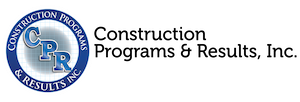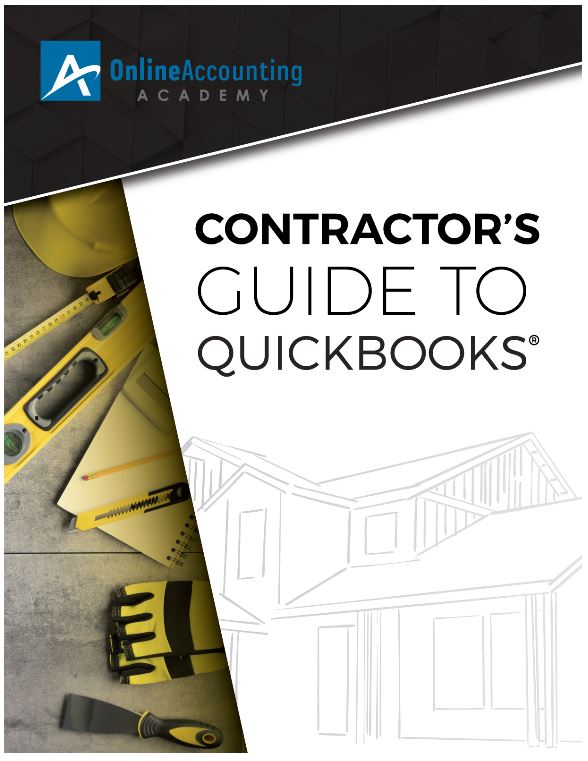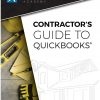Contractor’s Guide to QuickBooks – PDF eBook
$29.99 – $34.50
QuickBooks can simplify staying on top of your finances. But learning QuickBooks can be complex on your own. That’s why you need this .pdf file.
QuickBooks isn’t just for taxes. You can use it for payroll, managing your vendors and subs — even job costing. If you’d rather be building homes than burning the midnight oil trying to figure it all out, you should have this new book.
These .pdf files provide QuickBooks training for contractors. Two versions are now available: one for QuickBooks Desktop and one for QuickBooks Online.
The QuickBooks Desktop version includes a template for a construction company to help speed your set up. Both books discuss the Chart of Accounts, adding Customers, Material Suppliers, and Subcontractors. Invoicing, paying bills, Employees and Payroll, Reports, End of Month and End of Year Procedures. A detailed Table of Contents for each can be seen in the tabs.
Job costing is explained in the QuickBooks Desktop version. Now that ‘Projects’ have been included in QuickBooks Online, the Online version explains how you can finesse QuickBooks Online to provide some job cost reporting. While QuickBooks Online isn’t as robust as QuickBooks Desktop or other industry-specific programs, you can use the features available to get some basic job cost reports.
If you’re concerned about future versions of QuickBooks, at this time we know the Desktop booklet will still be useful for QuickBooks Desktop 2020 because there were very little changes made to QuickBooks Desktop for 2020. In fact, there haven’t been many changes in QuickBooks Desktop from 2017 to now, some people only have to upgrade for Payroll reasons.
QuickBooks Online is different. It’s updated monthly, which makes it difficult to keep a booklet like this current. This version was updated in March of 2021. The changes made to QuickBooks Online are reviewed when they are announced and most changes aren’t significant in regards to how a Contractor would use the software. If/when there are significant changes that will affect the book and the directions included, the book will be edited accordingly. There is a code in the Online version how to get an updated version at a significant discount.
These eBooks are .pdf files, available for download immediately after purchase. QuickBooks Desktop is 146 pages; QuickBooks Online is 82 pages.
Introduction
Chapter 1: Terminology
Construction Related Accounting Terms
Chapter 2: Setting Up Your QuickBooks Company
Getting Started
Adding Your Company Information
Chapter 3: How to Set QuickBooks Preferences
General Preferences
Accounting Preferences
Bills Preferences
Checking Preferences
Finance Charge Preferences
Jobs & Estimates Preferences
Payroll & Employees Preferences
Reports & Graphs Preferences
Sales Tax Preferences
Tax: 1099 Preferences
Time & Expenses Preferences
Chapter 4: Chart of Accounts
Assets
Liabilities
Equity (Capital)
Income or Revenue
Job Costs (Cost of Goods Sold)
Overhead Costs (Expenses)
Other Income
Other Expenses
Sample Chart of Accounts
Change and Add to Your Chart of Accounts
Chapter 5: Opening Balances
Entering Opening Balances in QuickBooks
Chapter 6: Customers & Jobs
How to Set up a New Customer
Adding a Job for a Customer
Chapter 7: Vendors
Setting up New Vendors
Chapter 8: Subcontractors (1099 Vendors)
Setting up 1099 Vendors
Chapter 9: Items
Entering New Items
Chapter 10: Classes
Using Classes to Track Cost Categories
How to Create a Class
Chapter 11: Estimates
Creating a Job Cost Estimate in QuickBooks
Customizing an Estimate Form
Memorizing an Estimate
Chapter 12: Billing Schedule
Creating a Billing Schedule Estimate
Creating an Invoice from a Billing Schedule Estimate
Recording a Payment You Receive
Recording a Deposit
Chapter 13: Writing Checks
Writing Checks to Record Transactions
Writing Checks for Job-Related Expenses
Writing Checks for Overhead Expenses
Chapter 14: Credit Cards
Entering Credit Card Charges
Making a Credit Card Payment
Chapter 15: Paying Bills
Entering Bills for Job-Related Expenses
Entering Bills for Overhead Expenses
Paying Bills
Printing Checks
Chapter 16: Employees
Setting Up Your Employee List
Personal Info tab
Address and Contact tab
Additional Info tab
Payroll Info tab
Employment Info tab
Chapter 17: Payroll Items
Your Payroll Items List
Adding and Linking Payroll Items
Chapter 18: Payroll
Entering a Timesheet
Processing Employee Payroll
Using the Preview Paycheck Window
Entering Payroll Additions and Deductions
Printing Employee Checks
Chapter 19: Worker’s Compensation
Chapter 20: Reports
Job Estimates vs. Actuals Detail
Profit & Loss by Job Type
Job Costs Detail Report
Chapter 21: End of Month and End of Year Procedures
End-of-Month Procedures
Reconcile All Accounts
Run and Review Important Reports
Financial Statements
Balance Sheet Previous Year Comparison
Profit & Loss Previous Year Comparison
Profit & Loss Standard
Back Up Your Data File and Close the Year
Conclusion
Introduction
Chapter 1: Terminology
Construction-Related Terminology
QuickBooks Online Terminology
Chapter 2: Chart of Accounts
The Chart of Accounts
Assets
Liabilities
Capital
Income
Job Costs
Overhead Costs
Other Income
Other Expense
Chart of Accounts Example
Change and Add to Your Chart of Accounts
Chapter 3: Opening Balances
Entering Opening Balances
Chapter 4: Customers & Projects
The Sales Menu
Setting Up a New Customer
Adding a Project
Chapter 5: Vendors
Setting up Material Suppliers
Chapter 6: Subcontractors (1099 Vendors)
What is a 1099?
Entering a New 1099 Vendor
Chapter 7: Products & Services
Entering New Service Items
Chapter 8: Classes
Using Classes to Track Cost Categories
How to Create a Class
Chapter 9: Billing Schedule
Customizing an Estimate Form to a Billing Schedule Estimate
Creating a Billing Schedule Estimate
Creating an Invoice from a Billing
Schedule Estimate
Chapter 10: Time & Materials/Cost Plus Invoicing
Preferences for Time & Materials
Invoicing for Billable Expenses
Chapter 11: Payments & Deposits
Recording a Customer Payment
Recording a Deposit
Chapter 12: Payables
Checks Window in QBO
Checks for Job-Related Expenses
Writing Checks for Overhead Expenses
Entering Bills for Job-Related Expenses
Entering Bills for Overhead Expenses
Paying Bills
Entering Credit Card Charges
Chapter 13: Employees
Setting up Your Employee List
Chapter 14: Payroll Settings
Your Payroll Settings
Chapter 15: Payroll
Entering a Timesheet
Processing Employee Payroll
Using the Preview Paycheck Window
Chapter 16: Worker’s Compensation
Chapter 17: Job Cost Reports
Job Budget vs Actuals Detail Report
Profit & Loss Detail Report
Chapter 18: End-of-Month & End-of-Year Procedures
End-of-Month Procedures
Reconciling Each Checking Account
Deposits and Other Credits
Checks and Payments
Running and Reviewing Important Reports
Financial Statements
Balance Sheet
Balance Sheet Previous Year Comparison
Profit & Loss
Profit & Loss Previous Year Comparison
Profit & Loss as % of Total Income
Closing the Year
Conclusion




Brenda Ferraton, Eston Industries Ltd (verified owner) –
This is a great resource and I am very pleased with the results!
Please note that Canadian Quickbooks does not allow the option of manual payroll. The only way to get payroll is to subscribe ( very annoying in my opinion)
Excellent and highly recommneded!
Chris Mousley, Crossbeam Builders LLC –
QuckBooks has become standard equipment in business. As Michael has stated in his course construction is unique in how it runs and operates. If you are using a book keeper or doing the work yourself this guide will help. I have been running QB for 9 years and finally I have it organized and can read the financials, run accurate reports and calculate an accurate markup without all the guesswork.
Karen does an excellent job describing everything from starting the company file to how to deal with everyday transactions! You wont regret having this reference in your library!